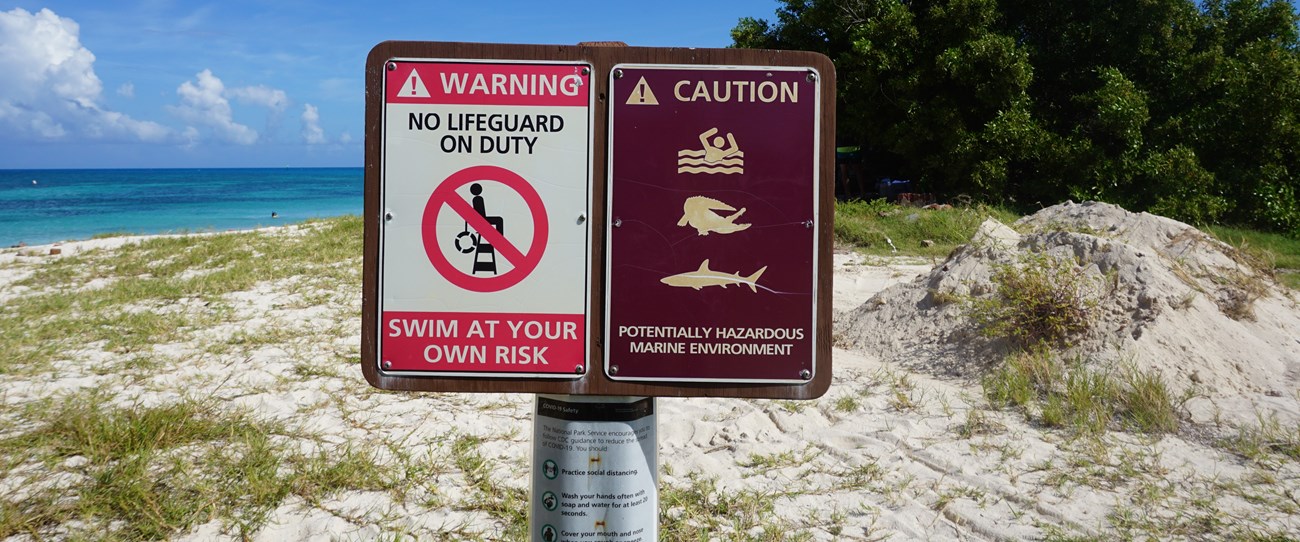
Be safe - It's a Long Way to the HospitalThe Dry Tortugas National Park has much to offer! To reach this remote ocean wilderness one must travel by boat or plane over 68 miles of open sea.
Important Safety TipsIf you have any questions, please talk to a Park Ranger before enjoying the park's resources.
Plan Ahead:
Questions? Talk to a Park Ranger on the island before heading out. Wildlife at Dry Tortugas National Park is plentiful! Birders as well as marine life enthusiasts will not be disappointed at the park. It is important to remember that all wildlife is protected and wild. Never approach, touch, or collect any wildlife during your visit.
Dry Tortugas Has Two Seasons
Heat at Dry Tortugas |
Last updated: May 11, 2021
